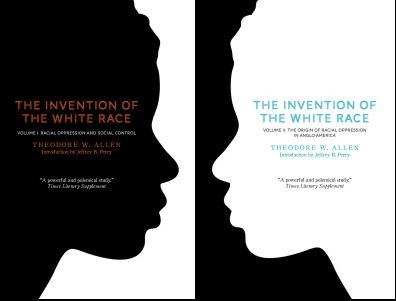|
Organize the White
Working Class
By Richard Moser
June 12, 2020 "Information
Clearing House" - First in the series:
Organize the White Working Class!
“ . . . their (the poor “whites”)
own position, vis-a-vis the rich and
powerful . . . was not improved, but
weakened, by the white-skin
privilege system.”– Theodore W.
Allen, Class Struggle and the Origin
of Racial Slavery: The Invention of
the White Race, 1975*
“The ‘white race’ is the
historically most general form
of ‘class collaboration.”- Theodore
W. Allen, Taped Interview with
Chad Pearson, SUNY-Albany, May
13, 2004,*
The time is ripe.
At no time since the ’60s has social movement
activism created such rich opportunities to oppose
racism and engage white people in a struggle over what
it means to be white and a worker in America. And that
engagement will be most successful in the world’s best
classroom: movement building, organizing, and activism.
Like many times in our past, Americans of African
descent have led the way. The new civil rights movement,
the uprisings in Ferguson and Baltimore, the
BlackLivesMatter movement, and the resistance to Trump’s
reemergent racism, has given birth to an array of
new organizations and political projects. Like no
other single scholarly work, Michelle Alexander’s
The New Jim Crow:
Mass Incarceration in The Age of Colorblindness has
rallied the troops and identified the enemy.
Over the past few decades, the American people have
created a vast militarized penal system that is now the
most powerful institutionalized racism in the US. And
like the forms of institutionalized racism that preceded
it, the penal system functions as an effective form of
social control. Discriminatory and militarized policing,
on-the-spot executions,
slave-like prison labor,
mass incarceration,
school-to-prison pipeline,
restriction of trial by jury,
lengthy and mandatory sentencing,
predatory fine, fee and
debt traps, and its gigantic sweep and size
constitutes nothing short of a preemptive war against
the most potentially rebellious parts of the population:
the young, people of color, the poor. If you favor
social change then the vast militarized penal system
must be confronted. It controls us all black and brown
and white.
The new civil rights movement has challenged white
activists to confront white racism at a time of economic
and workplace conflict. The never-ending recession of
2008 has intensified wealth
inequality across the board with the upward
redistribution of wealth falling hardest on Americans of
color.1 Good
full-time jobs are going and in all likelihood, they are
not coming back.
There is a widespread understanding that the economy
and political system are rigged. One of the main rigs
is the class line: corporate power now controls the
economy and government wielding both great wealth and
global political power. Once the insatiable demand for
power and profit drive government, representative
democracy fails and can no longer deliver significant
economic benefits to everyday people. Yet, Occupy and
the Sanders campaign, the resistance to Trump and other
social movements have revealed the discontent of
millions of white people who have the capacity to create
progressive social movements and even make history.
But the working class has deep flaws that have until
now proven fatal: it is divided. Race, gender,
sexuality, age cut us up in many ways. If history is a
guide to action we can retell a crucial part of the tale
by making a challenge to white supremacy central to our
organizing efforts. To do that, white people must combat
the system of white privilege that has long been the
primary means by which racism has been nurtured and
sustained.
|
Are You Tired Of
The Lies And
Non-Stop Propaganda?
|
Those white privileges are institutionalized in a
complex web of arrangements in housing, education,
health care, law enforcement, election procedures,
and voting that further rig the system against
people of color. But because white or male
privileges have been so deeply entrenched for so
long they often appear as seemingly neutral
measures of merit, at least to white people. How do
we shine a light on this blindspot?
Resistance and action are the best paths to
revelation. Institutionalized racism is historic and
collective and cannot be addressed through individual
repudiation alone. You can’t just give it up, even if
you want to, except through joining the social moments
for change and organizing at the point of privilege. The
purpose of these privileges is to keep us all in line.
White organizers and activists who challenge the system
have taken the first crucial step in repudiating
privilege. Many organizing projects await and all of
them are difficult and challenging. We can expect no
easy victories.
Organize Our Own?
As the ’60s revolution came up against the wall of
institutionalized and interlocking obstacles, civil
rights organizers experimented with Black Power and
Women’s liberation. Malcolm X, Stokely Carmichael, the
Student Nonviolent Coordinating Committee, Jo
Freedman, Shulamith Firestone, and other authors of “To
the Women of the New Left” offered up some hard-won
knowledge.2 They told a sometimes bitter but compelling
truth: organizers were most effective working within
their own communities.
Speaking to the Organization of Afro-American Unity,
Malcolm X put it this way.
Now if white people want to help, they can help.
But, they can’t join. They can help in the white
community, but they can’t join. We accept their
help….They can…work in the white community on white
people and change their attitude toward us.3
“Organizing your own” was not a call to
white separatism, but a way to lay the basis
for coalition movements in which
working-class whites saw their own destiny
bound up with that of black folks. In
Black Power and White Organizing, Anne
Braden, a legendary southern white civil
rights organizer, wrote:
Certainly the inherent needs of poor
white people are reason enough to
organize—they, like poor black people,
are ill-fed, ill-housed and lacking in
opportunities for education, medical
care, political expression, and dignity.
But I think what we are recognizing is
that these white people will never be
able to solve these problems unless they
find ways to unite with the black
movement seeking the same things.
My purpose is not to present false either/or choices.
The organizational forms we create are up to the local
situation and local actors. White organizers can make
contributions in
multi-racial groups, coalitions, unions, as well as
in community groups among the white working class. But
one way or another, we white organizers must reconsider
ways of talking and organizing around white supremacy
and white privilege.
Luckily for us, we can follow the work of the great
white working-class intellectual, Ted Allen, as our
north star. Next we will look at the strategic
implications of his classic work:
The Invention of the White Race.
Post your comment below
Notes
*Both quotes cited in Jeffrey B. Perry,
The Developing Conjuncture and Some Insights from Hubert
Harrison and Theodore W. Allen on the Centrality of the
Fight against White Supremacy p. 2 and p. 5
- Keeanga-Yamahtta Taylor, From #BlackLivesMatter
To Black Liberation, 27 and 28.
- See Chapter 8, Sara Evans, Personal Politics.
“Women of the New Left” cited by Evans p. 200.
- Malcolm X, By Any Means Necessary, 58.
Ted Allen and the
Invention of the White Race

Second in the series: Organize the White Working
Class!
There is no better place to
start organizing than with political strategy
inspired by Theodore W. Allen’s classic book:
The Invention the White Race: Volume I Racial
Oppression and Social Control and Volume II: The Origins
of Racial Oppression in Anglo-America.
Before we continue, a word or two about Ted Allen.
Ted Allen was a working-class white man without
college training but with a long history of activism and
a deep determination to uncover the truth about how
racism came to be in America. Allen was a Marxist and
used a class-based analysis to guide his study. Jeffrey
B. Perry continues Allen’s work today, and you should
view his
presentations on Allen’s legacy.
The power of Allen’s ideas comes from his unmatched
devotion to research. He spent more than 20 years
digging deep into the colonial archives of Virginia and
mastered what is, arguably, the most extensive body of
evidence ever produced on race in early colonial
America. Allen contested and bested some of the most
acclaimed historians in the field. The working-class
reader cannot help but revel in the fact that a worker
without a degree kicked Ivy League butt.
But getting class identity jollies aside, Allen’s
work is such a useful guide to action because he did
what no other historian did. Allen created an argument
that might help us discover a truly political strategy
to fight racism among whites based on empowerment, class
solidarity, community interest, and self-interest,
rather than relying on morality, guilt, and shame. In
other words, Allen innovated a revolutionary approach to
fighting white racism and white privilege.
The Invention of the White Race
What Allen discovered transformed our understanding
of race in America and can transform our organizing
practice and activism. He shocked readers with a
startling finding:
“When the first Africans arrived in Virginia in
1619, there were no “white” people there; nor
according to colonial records would there be for
another sixty years.”1
Oh, yes, there were English and Irish, but nowhere in
the colonial record is there evidence that law or
society granted special privileges to people based on
European origin.
The white race and white identity were “invented,”
Allen argued, by the ruling elite of Virginia, in order
to divide laboring people in the aftermath of Bacon’s
Rebellion of 1676. The white race was constructed and
used as a political instrument to divide and conquer.
How did this come to be?
By 1620 or so, a system of unfree labor became the
dominant labor system in Virginia. The system was
essentially slavery, some “bond-laborers” had
time-limited contracts, but most servitude was open to
interpretation by custom. A majority of these
bond-laborers were Europeans.
The archival evidence is clear, as well, that the
role of African and African Americans was
“indeterminate.”2 From 1619 to the years following
Bacon’s Rebellion, the status of black people was
contested in the courts and in the fields. Africans held
a variety of social and economic positions: some were
limited term slaves, some free, some endured lifetime
bondage, while others were property holders, even
including a few slave owners.
It was not until after Bacon’s Rebellion, or the
second phase of Bacon’s Rebellion to be precise, that
law and society created a new custom of racism, and for
that to happen, the white race had to be invented. What
was the trigger?
“[I]n Virginia, 128 years before William Lloyd
Garrison was born, laboring class African-Americans
and European-Americans fought side by side for the
abolition of slavery. In so doing, they provided the
supreme proof that the white race did not then
exist.”3
The Rebellion occupied the capital of Jamestown and
pointed the way toward freedom for everyone, by
contesting the rule of the oligarchs who had grown rich
on slave labor and land stolen from the natives.
“[I]t was the striving of the bond-laborers for
freedom from chattel servitude that held the key to
liberation of the colony from the misery that
proceeded from oligarchic rule…4
After the rebellion was suppressed, law and custom
began to shift. Europeans were increasingly designated
as “white” in the historical record, and given
privileges that conferred a “presumption of liberty”
while blacks were increasingly subjected to legal and
cultural limits to their freedoms. Whites were
encouraged to view blacks with contempt and see their
inferior social positions as proof of innate
inferiority.
Allen summarized the early system of white privilege
as “simply the right to be free.”
All authorities agree…that the conditions of the
masses of white industrial and agricultural workers,
North and South, were abominable in the decades
before the Civil War. Still they had their
white-skin privileges: The white worker was an
actual or potential citizen, with citizen’s rights;
the black had no rights. The white, as possessor–if
not immediately, then within a definite time–of his
own person, had legal freedom of movement; the black
did not own himself. The white, if bound by
indenture, debtor apprenticeship, or in some other
manner, might still succeed in escaping into the
free-moving white world much more easily than the
black worker. As possessor of himself, the white
workers could–even though not always immediately–
take a better job, if he could find one; the black
had no such chance. The white worker, if opportunity
afforded, could learn to read and then study as a
means of improving his lot; the black worker was
forbidden by law even to learn to read. The white
worker could aspire to become a farmer, a merchant
or an industrialist; the black had only flight,
revolt, revenge to dream of. At this point, the
white skin privilege of the white worker was simply
the right to be free…5
The white race, white supremacy, and black
subordination were all products of the same historical
period in which the slave system was recreated as a
racist system to prevent the threat of united action by
the people. Today the new oligarchy still relies on
their ability to divide and conquer.
Here is Allen’s legacy and challenge to us: racism is
historical, it is the product of human activity. If it
was then, it is now. Racism was founded on a system of
privileges designed to win working-class white people’s
support for slavery. And so it is to
white privilege that we must look if we want to free
ourselves from being the tools and fools of the rich and
powerful.
We must be pawns no more.
Notes
- Allen, Invention of the White Race Vol. II p X
- Invention of the White Race Vol. II p 178
- Invention of the White Race Vol. II p 214-21
- Invention of the White Race Vol. II p 212
-
Can White
Workers Radicals be
Radicalized? p176 in Revolutionary Youth & The New
Working Class/Lost writing of the SDS.
Continue reading this series of articles at https://befreedom.co/organize-the-white-working-class/
|
Are You Tired Of
The Lies And
Non-Stop Propaganda?
|
Post your comment below
|
|
|
|

 |
Search
Information Clearing House
|
===
|